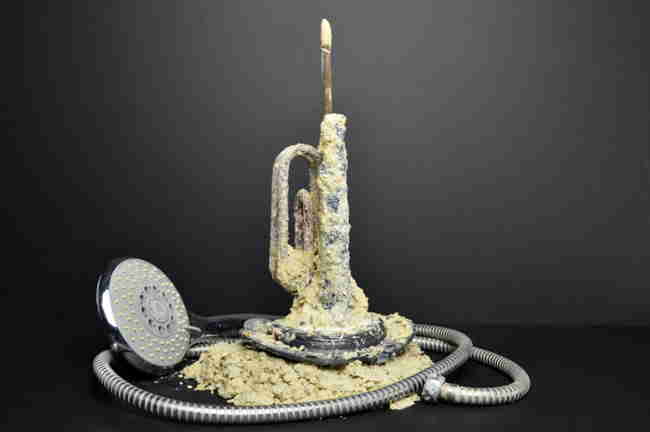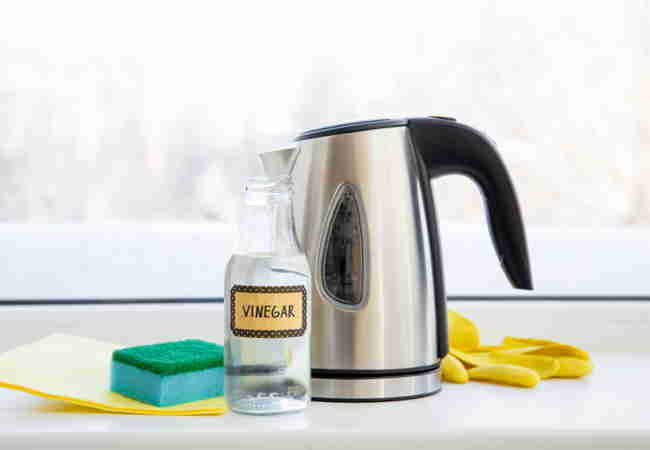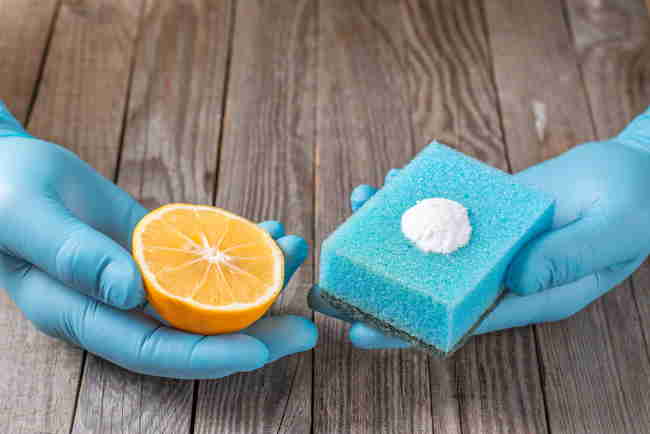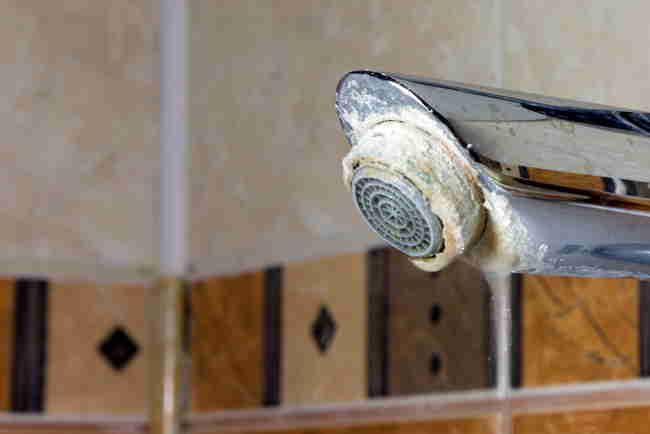Research into how hard water affects UK residents has revealed that one third of respondents saw their home appliances (showers, taps, pipes, washing machines etc.) damaged by limescale. Furthermore, over 25% felt that their household water supply had a detrimental effect on their skin and hair.

What is Limescale?
In light of these findings, and also because limescale just looks horrible when it hardens on your taps, sinks, pots, pans, toilets or bathroom tiles, we’ve put together a guide on how to get rid of limescale.
Limescale is a deposit of calcium carbonate and other particles left behind by hard water. This hardens into a chalky white crust with a yellowish or grey tinge that is notoriously difficult to get rid of.
This deposit is left behind due to the high concentration of minerals such as magnesium and calcium in the water. Once limescale sticks to a surface, further deposits build up on the first layer, leading to a rapid accumulation of this unsightly substance.
Not only does limescale develop on the outside of surfaces, it can also build up on the inside of pipes, for example, sometimes causing clogs.
How to Remove Limescale
There are three main substances which one can use in order to descale the various affected surfaces around their house:

– Vinegar
Vinegar based descaling solution:
Mix a half cup of water with a half cup of plain white vinegar.
– Lemon
Only thing you’ll need is a few lemons, depending on how big the surface you’re trying to clean is. You can either cut the lemon up or use its squeezed juice, this will again depend on the appliance or surface in need of descaling.
– Baking soda
Baking soda descaling solution:
Mix one tablespoon of baking soda with 15ml of distilled water.

For lemon juice and vinegar solutions, you can use a spray bottle to cover the whole surface. For small build-ups, you can leave the solution on for about an hour and then wipe it off and rinse with hot water. In case the limescale layer you’re dealing with is larger, you must leave the solution on overnight, allowing it to soak the surface, and then wipe it off and rinse.
In order to clean surfaces using a lemon, you can slice as many flat pieces as you like and place them on the surface in question. Leave them for a few hours or overnight and then remove them. Rinse and wipe with a cloth as many times as needed in order to do away with all of the calcified layers. You can also use a half lemon in order to get rid of limescale on taps.
When it comes to vinegar and water solutions, you can either use the first method described above or soak a kitchen towel or rag in it and wipe the surface. After you remove the superficial layers, go ahead and re-soak the rag in the vinegar solution and wrap it around the surface (this works especially well for showerheads). Leave the rag on overnight and then remove and rinse the surface; it should now be clean.
If you want to remove limescale from metal surfaces, you need to use the baking soda solution described above. Either a sponge or microfiber cloth can be used with this mixture. Soak one half of the sponge or cloth in the baking soda solution and scrub the build-up away. When it looks like the calcified deposit has all but detached from the surface, rinse with a fresh batch of distilled water. One thing to mention is that this method might damage the surface you’re trying to clean. As a result, it’s a good idea to test the solution on a small part of whatever it is you’re trying to clean in order to see how it will react.

How to Prevent Limescale
- Regularly clean your kettle to prevent limescale from forming inside.
- Install a household water softener. Keep in mind that it needs to comply with the Water Supply (Water Fittings) Regulations 1999.
- Carefully and regularly clean your appliances. With proper maintenance, you will be able to avoid limescale deposits even if you live in an area with very hard water.
Don’t Fancy Doing It Yourself?
In case you’re not too keen on removing the limescale yourself, or you’ve just encountered a particularly stubborn build-up, you can always opt for a professional cleaning service. Experienced professional cleaners will have dealt with the worst kinds of limescale deposits and will know exactly what to do in order to rid you of them. You could even book a spring cleaning service if you’ve neglected your house chores during the winter months. A deep cleaning service could also be in order. If you’re unsure what deep cleaning is, check out our post detailing the difference between deep cleaning and regular cleaning.
For more cleaning tips, check out our posts on how to clean outside windows you can’t reach and how to clean a patio properly and easily.
Furthermore, if you require more information regarding our cleaning prices don’t hesitate to get in touch or check our website.
